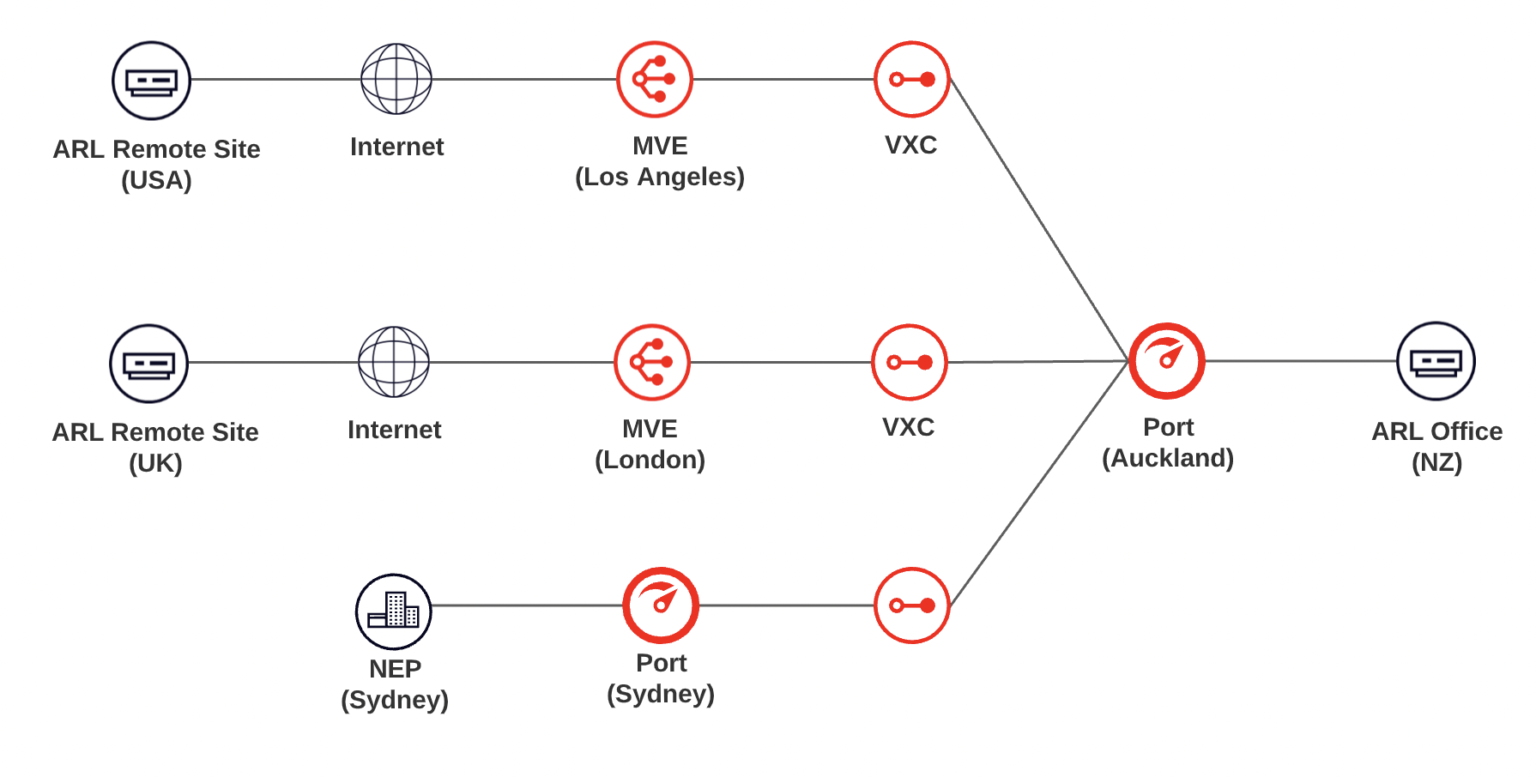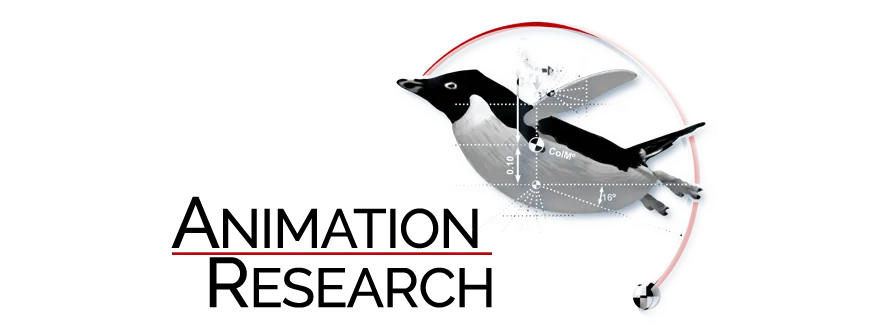
About Animation Research
Founded in 1989, Animation Research Ltd (ARL) was founded on the premise that digital data would be the currency of the future, and that ARL would develop tools to turn that data into pictures that people could understand. Those pictures would then be delivered to users how they wanted them, when they wanted them, where they wanted them.
While they’ve developed data visualization tools across a wide range of industries from air traffic control simulators to medical devices, educational platforms, and television commercials, it was with their sports graphics platform Virtual Eye that ARL has become best known.
Virtual Eye has won numerous awards including three Sports Emmys, and the remote platform they built in response to the COVID pandemic was recently awarded the American Chamber of Commerce Award for Success, Resilience, & Innovation.
Key Points
- Halved provisioning time to improve live sports broadcast latency.
- Simplified connectivity processes and gained more granular control with the Megaport portal.
- Significantly reduced costs for constantly changing network requirements by moving from a static contract model to Megaport’s pay-as-you-go model.
- Reduced carbon footprint by 85 percent by drastically cutting travel to live events and reducing on-site event crew sizes thanks to Megaport’s Software Defined Network (SDN).
Case Study Snapshot
For almost 30 years, teams from the award-winning Animation Research Ltd would travel to every sport event in the world to deliver Virtual Eye Sports graphics to their broadcast clients – golf, cricket, F1, and sailing are just some of the sports they’ve covered across the globe.
By 2020, the New Zealand based computer graphics company was the major provider of real-time graphics for almost all major golf tournaments in the world. But on March 13 2020, having delivered just one day of the PGA Players Championship in Ponte Vedra, USA, that all came to a halt as COVID-19 forced the teams back to New Zealand and into lockdown.
With no guarantee that borders would allow them to return to travelling when sports resumed, the ARL team developed a plan to deliver all their graphics remotely from their offices in New Zealand.
Amongst the many challenges they faced, the most pressing was how to deal with the unreliable and costly global connectivity as a result of working so far from their markets. Their search for a solution led them to explore a private cloud connectivity setup with AWS which would enable scalability for their fluctuating connectivity needs and provide an easier, faster way to connect than the public internet.
Challenges
Have you ever wondered how the broadcasters of live sports get those graphic overlays onto the footage so quickly? From digital track maps showing where America’s Cup boats are on their invisible racecourse, to diagrams showing the arc and distance of a golf ball after it is struck – if you’ve watched live sports anywhere in the world, you’ve likely seen the work of Animation Research.
Until recently, these real-time 3D graphics were delivered to broadcasters by on-site operator teams, capturing data streams directly from the field of play. These streams are significant; data capturing anything from the spin rate of a golf ball or the swing speed of a baseball bat, to the weather conditions and tide on a sailboat race, all has to be visualized in real time for use across broadcast, streaming and apps.
Impact of COVID-19
COVID-19 has significantly accelerated ARL’s five year plan to adopt more remote operations, driven by an awareness of the ever-increasing carbon footprint generated by the global travel of its operators. The pandemic accelerated both the need for, and industry acceptance of, this new way of operating.
High costs
With ARL’s original setup of using traditional connectivity providers over the public internet, they were paying for the highest-bandwidth scenario, all the time. And with fleeting requirements for extremely high bandwidth to support their live graphics broadcasts, this was an expensive arrangement for them to maintain indefinitely.
Solution
Connecting to AWS via Megaport
“The flexibility, scalability, and security of AWS was the answer we needed for cloud-based remote production operations,” said John Rendall, Head of Technology and Innovation for ARL.
But while AWS gave the ARL team the capability to deliver augmented reality, virtual ball tracking, and other graphical elements in real time, they knew connecting to AWS via the public internet wasn’t going to give them the reliability, speed, and control they needed. After Researching for better ways to connect to AWS, they found Megaport.
“To be honest, we thought it seemed too good to be true – it was the perfect solution,” said Rendall.
Live sports require a huge amount of bandwidth during broadcasts. With Megaport’s pay-as-you-go business model, ARL can now adjust their bandwidth in a few clicks via the Megaport portal. Once the game ends ARL’s bandwidth needs drop dramatically until the next broadcasted game. With a scalable network setup, this has given them significant cost savings.
“Being able to ramp that bandwidth up whenever we need, bring it back down after we need it, and only pay for what we need – that’s the most amazing part of using Megaport to connect to AWS.” said Rendall.
Speed of provisioning
In an industry where milliseconds matter, having access to reliable, fast connectivity has been a game changer for ARL.
After testing public connectivity against private connectivity for speed differences, they concluded that private connectivity was consistently up to 50 percent faster. Plus, having access to Megaport’s extensive global private network, with hundreds of Points of Presence (PoPs) available to connect to AWS, gives ARL the peace of mind that whatever they’re broadcasting, and wherever they’re broadcasting from, they’re getting the lowest latency possible.
Improved sustainability
Prior to using Megaport’s Software Defined Network (SDN), ARL would typically have up to 8 people working on-site at any given event all over the world. Now, instead of having to arrange flights and accommodation up to thousands of times a year for these remote crew deployments, ARL has reduced crew size for multi-day events—and carbon emissions from travel—by an average of up to 85 percent.
With Megaport’s digital backbone connecting ARL between all of their critical points, they’re successfully supporting multiple simultaneous productions remotely. They now take comfort in assuring clients their capability is in no way impacted as a result of working offsite.
Ease of use
With 30 to 40 active global projects happening at any given time, it’s essential that ARL has granular visibility and control over their connections via self service provisioning.
“Having the flexibility to be able to just go into a web portal and provision whatever we need, at any scale, with such ease and speed – that’s an absolute game changer for a business like ours,” said Rendall.

The projected setup ARL is currently implementing, including MVE for boosted edge connectivity.
Future Plans
“Megaport is breaking new ground in our field, and as a result, what we’re doing is cutting-edge in our industry. So we definitely have big plans to use the service a lot more across our different business functions,” Rendall said.
One of the biggest potential next steps in ARL’s sights is the introduction of Megaport Virtual Edge (MVE). A successful pilot in Europe with Fortinet has opened up global possibilities for ARL allowing them to leverage Megaport’s global backbone combined with MVE-hosted FortiGate appliances to deliver improved security and performance to support end-to-end media workflows.
“Last-mile connectivity is a topic that comes up all the time with remote broadcasting,” Rendall said. “Optimizing connectivity and broadcasting quality from remote locations is one of our next challenges, so SD-WAN and MVE will have a lot of advantages for us.”
